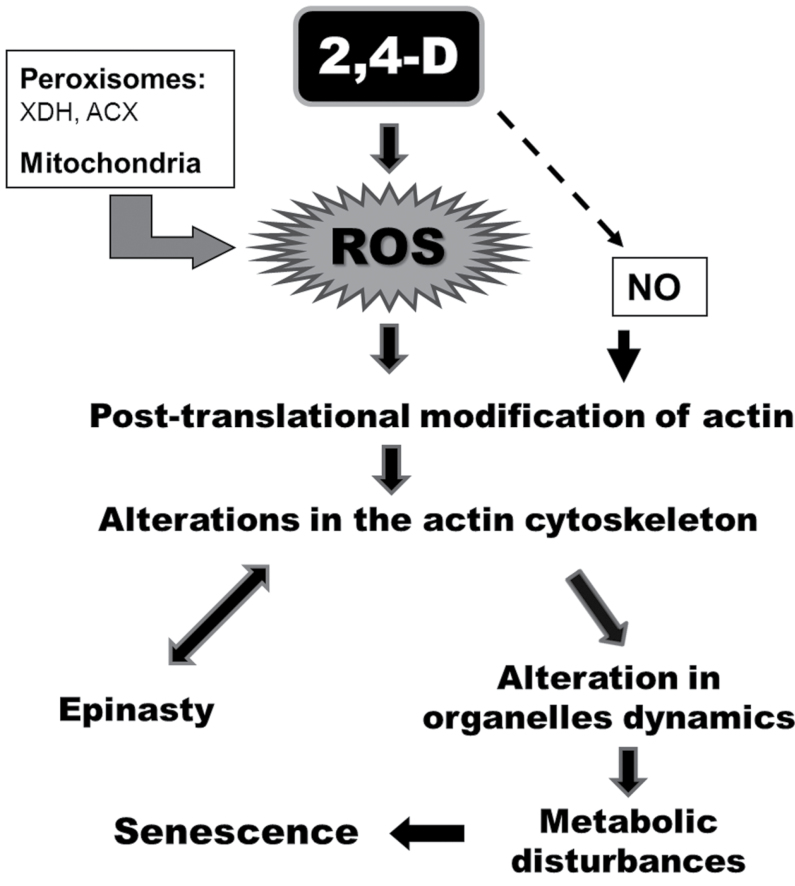Fig. 6.
Schematic showing the possible mechanistic toxicity of 2,4-D in Arabidopsis plants. 2,4-D promotes oxidative stress, where peroxisomes and mitochondria represent the main sources of ROS, giving rise to post-translational changes of actin by oxidation and S-nitrosylation, causing disturbances in the actin cytoskeleton and thereby affecting trafficking of organelles. These structural changes in turn appear to be responsible for leaf epinasty, although processes involved in developing epinasty can also contribute to actin cytoskeleton disturbances. Alteration of the cytoskeleton could also be responsible for metabolic disturbances, signalling disruption, and further senescence. XDH, xanthine dehydrogenase; ACX, acyl-CoA oxidase.

